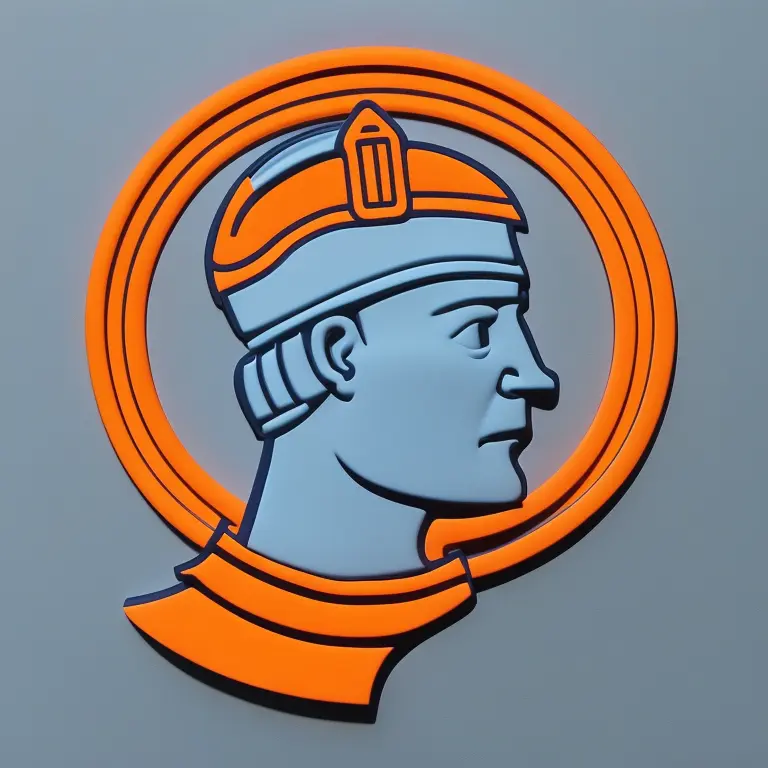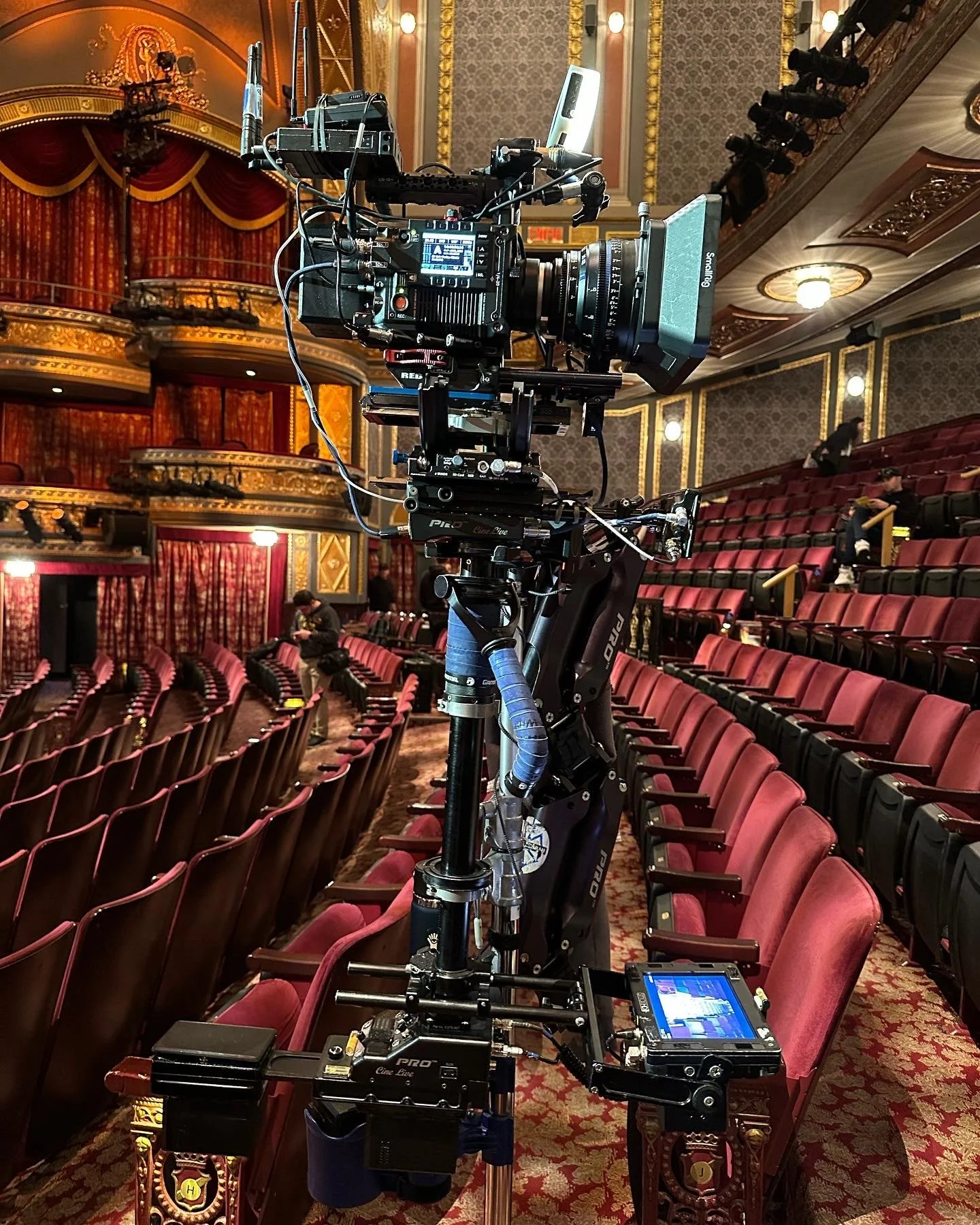Recently I’ve been having feelings about moving away from Fusion 360. The combination of cloud app / filesystem and their demonstrated willingness to remove features and add arbitrary limitations (eg. 10 editable model limit) makes me feel uneasy about using it. To be clear I’m grateful that AutoDesk provide a free license at all, and it’s an incredible piece of software, but I have a sense of vulnerability while using and honing my skills in it. If you’ve ever rented a house you’ll know the feeling - you quite don’t feel like it’s really your home, if the landlord wants to make renovate or redecorate you don’t have any choice and you could be evicted at any moment.
So I tried FreeCAD. At first, I have to say that it felt a little like stepping out of a spaceship (Fusion) and banging rocks together like a caveman. It’s not that you can’t do (most) of the same things as an enterprise CAD package, but the killer feature of Fusion is the level of intuitiveness and “it just works” that makes FreeCAD seem like trying to write Latin.
After a week of on-and-off learning I was not sure I wanted to continue. Even after getting comfortable with the basics, frustration levels would spike to 11 sometimes. The main issue I kept running into was that altering a previous feature would break everything that came after, requiring a varying amount of work to fix. The FreeCAD wiki suggests ways to mitigate this but many of them are un-intuitive and/or inconvenient. After some googling this seems to be caused by a pretty difficult to solve issue called the “Topological Naming Problem” (where FreeCAD can’t keep track of surfaces / edges / vertexes in a stable fashion when features are changed). Then I came across this blog post that pointed out a fix has actually been developed earlier this year. A developer by the name of RealThunder has created a fork of FreeCAD called “Link Branch” which can track topology in a (more) stable fashion.
I tried this branch and was blown away by how much more usable it is. Not only can it handle changes to past features almost perfectly, but I can create multiple bodies from a single sketch (not possible before) and there are other UI tweaks that make creating features easier such as the ability to preview fillets and chamfers at the same time as selecting their edges. I’m not totally sure which of these features are unique to Link branch vs which might be pre-release in the main branch, but certainly the topology naming fix is unique to Link.
So if you have tried FreeCAD in the past and been frustrated, or if Fusion’s past free license changes or price increases are making you uneasy, give the Link Branch a try! Downloads are available in the releases page.
To be clear I’m grateful that AutoDesk provide a free license at all, and it’s an incredible piece of software, but I have a sense of vulnerability while using and honing my skills in it.
No, nope, nope, nope. Abolish this line of thinking right now. Any company that employs the predatory licensing tactics like those AutoDesk uses are not worthy of one single synapse’s worth of your continued thought. Fuck them. Shed not a single tear. They’re not giving you anything; they’re trying to lock you in as a future revenue source. Thus you have nothing to be grateful for, other than the bullet you’ve now dodged. You are Lot. Walk away and don’t look back, lest you turn into a pillar of salt.
I don’t usually get into this sort of Stallman style FOSS rant, but the behavior of the major players in the commercial modeling space – especially AutoDesk and SolidWorks/Dassault – is just exceptionally bullshit. Pandora’s box is already open on the hardware; any fool with thumbs, a credit card, and internet access can either buy or build an actual 3D printer. So instead they’ll do anything to lock the software side of this wonderful technology in their own proprietary, pay-to-subscribe box.
The Topological Naming Problem has been a thorn in the side of FreeCAD users since the dawn of time time, and while some work was put into the 0.2x release to address this (previous versions were even worse) it’s obviously still not perfect. For anyone not comfortable keeping track of forks and splits and unofficial releases, the intent for the Topo Naming fix developed in this release is for it to be incorporated back into the main line release… eventually. Also, even the most recent release of Realthunder’s fork is one major revision behind the main line release, and also has not been updated since the beginning of this year.
Despite all of this, FreeCAD along with all of its quirks and foibles represents an incredibly important bulwark against keeping a critical aspect of our hobby out of the clutches of corporations and other related doers of evil. Stick with it.
Thank you!
Imagine what the FOSS CAD space would look like if AutoCAD etc didn’t offer anything for makers!
Fusion 360 is amazing in the Getting Shit Donetm department, which is the weak point of FreeCAD. I have managed to steer through the byzantine UI of FreeCAD to create a CAD model, but it needed support by someone who has spent years in that application to get the more complex stuff, and even he didn’t exactly know how to achieve it, and that’s on top of me having participated in a 16 hour workshop on how to use FreeCAD. For Fusion 360, I’ve watched a few 5 minute videos on their official channel and that’s it, everything else I was able to accomplish through just looking at the UI.
I learned Fusion 360 before FreeCAD, so it’s not just that I had prior experience in another similar tool.
I think the basic problem with FreeCAD is that it’s a collection of tool benches written by different people who don’t talk to each other. They have overlapping responsibilities while still having vastly different feature sets and don’t integrate with each other most of the time. So, if you want to create a model, you first have to plan ahead to understand what kind of features it’s going to have, and based on that, you have to decide which collection of tool benches you have to pick. More than once I picked the wrong one in the start and then had to do everything all over again in the different one once I ran into a dead end.
Fusion 360 feels like it was written by a single team with a single vision, and everything fits together.
Removed by mod
It’s not the gouging out that bothers me. It’s the constant looming threat that they’ll take whe whole thing away and all of your work will be locked inside it unless you pay them.
Yeah, but I need my CAD software to work. I’m working using it. I’m not here to be a bulwark against the corporations to gimp myself and not use something better.
No one is asking you to be a bulwark. FreeCAD is doing it for you.
If you have a use for commercial software for commercial purposes, that’s fine. But most of us don’t, and the notion that our access to the software we need exists entirely on the whim of some fucking corporation is not acceptable. One who can easily decide that the hobbyist license tier is gone, or the tier you need now costs 3 times more because reasons, and by the way the file formats are all proprietary so good luck migrating to a new package.
It’s not paying for it that bothers me. It’s being milked for Yet Another Subscription. For sake of argument, I have and heavily use a licensed copy of CorelDraw for 2D vector art, but it’s a version I paid for and I can use it perpetuity. It’s not a subscription; no one can take it away from me. Sure, if I want the latest whiz-bang version I may have to pay for an upgrade license. But I don’t care about that, so I haven’t, and the copy of Corel I bought in 2008 (!) still works just fine. You can’t say that about Fusion 360.
the biggest turn off of freecad to me was the usability. It felt clunky, and frankly, it didn’t give the ability to follow my normal work flow. definitly going to give this a try, thank you.
I won’t say that FreeCAD has a good UX, but it helps a lot NOT to look at it as a CAD software, but as a collection of specialized engineering tools, organized into workspaces, haphazardly put together.
First thing you need to know is which workspace you’ll need, and FreeCAD does a terrible job at explaining you that (the concept of workspaces isn’t self explanatory) AND describing what each and every one of them does. Some of which should just be disabled by default because of how fringe, unpolished or unreliable they are.
Once you’ve got that part cleared, you can learn the primitives and the jargon (what’s a body, solid, part, mesh, element, …), not great, but fair. Then, you have to learn, for every workbench, what their workflow is (e.g. create a body, create a sketch, apply transformations ; Create an analysis, define material, define loads, add a mesh, add solver, add equations, run solver, add results, tweak the pipeline so it renders, show results), and yep, FreeCAD won’t hold your hand for any of that, you’ll have to wear your explorer hat and navigate from frustration to incomprehension until it accidentally works.
But then, if you can get over that, you’ll end-up with a tool that’s more powerful and versatile than anything else, including dandy commercial offerings. It still blows my mind that nowadays anyone in their garage can do for free what not so long ago would require a full engineering curriculum and corporate sponsorship to acquire licenses. My hope is that FreeCAD would gain the same kind of visibility that Blender enjoys, with sufficient funds for a small dev team and a great product manager.
FreeCAD could do with a massive UX overhaul and a workflow that people could use without having to relearn how to invent the wheel. The underpinnings of the software are good. They’ve done a lot of good work there. But as far as a usable piece of software, something like Blender – with a lot more complexity, and a lot more individual toolsets (2D Animation, Video Editing, VFX, Sculpting, Poly Modeling, Bone Rigging, Scripting – ALL with entire workflows associated with them) – has managed to be a wildly usable solution despite many of its individual subsystems working together.
FreeCAD suffers from the lack of proper workflow immensely, and will hamper its adoption unless the maintainers take a far more pragmatic approach to their development. They need to take this more serious, as more usage drives more funding, which drives better development. You can’t just go “It’s open source, YOLO, fuck you if you don’t like how we do things”. Because you’re just going to flounder as a long-lived project, but never a successful one.
I complain about FreeCAD because I want it to get better. I go back to it every year at least once, just to see if they’ve opened their eyes or not. I have used everything from Siemens Solid Edge, to Inventor, to Solidworks, Fusion360, OnShape, Blender, Rhino, hell – EVEN SOLVESPACE is easier to use than FreeCAD and it’s only a solver…not even a true cad environment for anything serious (fillets, etc)
Hell, Plasticity came along just last year and it’s only $100 with no “Rental Models”, and it’s probably already got more users than FreeCAD at this point. It certainly has more people doing tutorials for it, and more people picking it up. Even though it’s not F/OSS - it’s cross platform, cheap, and non-predatory. Obviously I’d prefer F/OSS software, but I’m not going to chop off my right arm to support it or work with so much hindrance that it causes me to work at 20% effectiveness vs other CAD software. Free only goes so far when your time and attention is worth as much as it is.
individual toolsets (2D Animation, Video Editing, VFX, Sculpting, Poly Modeling, Bone Rigging, Scripting – ALL with entire workflows associated with them) – has managed to be a wildly usable solution despite many of its individual subsystems working together.
Yup, I believe this boils down to good project management, someone has to steer those individual components so they work together better, in a cohesive manner, to make the result more than the sum its the parts. This is especially difficult in an opensource context where different contributors have different interests, and I think Blender, having managed that much, is an example to follow.
And I agree with everything you wrote, I don’t expect FreeCAD to get there in a reasonable timeframe unless it gets serious funding and expertise brought in.
Plasticity is a good project to follow, I don’t think they are comparable nor intended for the same audience, but there are product design aspects to learn from it, definitely :)
Isn’t it wild that all the FORKS of FreeCAD somehow manage to have better versions? FreeCAD is OVER 20 YEARS OLD.
How is it still such a piece of shit software? Because the maintainers are garbage. It has nothing to do with the topology problem, it has to do with workflow, and FreeCAD lacks it almost completely.
Edit: Ohhh, this is realthunder’s fork! Glad to see he’s continuing on it, but yeah - I think by now most FreeCAD users had known/switched over to his version anyhow.
I didn’t know about and was one of the reasons I was not using free as. Now I’ll have to try it again.
I didn’t know, either.
You sound like an ungrateful brat!
They sound like a realist. If every branch has a better version than main, then what are you doing with the master branch in the first place? There are a lot of glaring issues with the software. It spent so much time in development already, it should’ve been a second Solidworks by now. Instead you get a mess that breaks all the time.
Well you also don’t understand community projects apparently. It’s software made by mostly (or only?) unpaid volunteers. You can’t expect anything from it. Everything you get is a fucking present that you should be grateful for. If you don’t like it, go and pay for a commercial solution. Better even help out the project by reporting bugs, usability issues, writing docs or code.
For now FreeCAD is the best FLOSS CAD around and only a strong community will make it better. Naysayers like you and @thantik can go shut up, you don’t create anything of value by complaining. I agree that FreeCAD has many issues. The important part is that it’s getting better with every release and the releases keep on coming regularly.
I’ve used Blender 20 years ago and it was in a veeery different shape than today, but it was amazingly well managed and has developed into a beautiful piece of software rivaling even the most expensive commercial packages in many respects. I predict this to happen for FreeCAD as well. When I first installed it some ten years ago, I couldn’t even get it to make cube. Now I have yet to find a 3d printing project that I couldn’t do with it. Keeping in mind that Blender’s development started 1994, ie. roughly 30 years ago, we’d need to wait another 10 years for FreeCAD to be as good as Blender in its respective domain.
Boo hoo buddy. We are entitled to our opinion. I don’t care if it is made by volunteers, or if it is “the best open source solution out there”. It sucks for doing anything, and there are free options out there which are better.
You are entitled to your opinion but I think it’s stupid and unhelpful. You are clearly wrong about it sucking for doing anything.
I’ve used it for an extended amount of time because of the requirements of the project. It sucks. If you read this thread you will see other people saying it sucks. You will see people recommending forks of it to get basic cad functionality like the ability to edit the past. Stop fanboying, move on.
Fair enough. It’s not for you (yet?). But does that make it a “piece of shit software”?
seem like trying to write Latin.
This is quite funny for someone who has learned a (tiny) bit of latin, because this is 100% true, in like a positive and negative way.
FreeCAD is “unforgiving”, in that pretty much every dimension/curve/shape must be defined exactly as you want, in exchange, this makes the software very good if you know what you want to create, and how.
I’ve only used a tiny bit of Fusion at a school once, but it was a lot more “freeform” than FreeCAD, this made it easier to use, but as someone who knows what they want to create pretty exactly, I prefer FreeCAD
This reflects languages. Latin is very organized, a single verb ending changes it from like “he who did” to like “he who has done” and you’re supposed to know that. It’s heavily theorized (and is 100% paritially true) that Latin is specifically designed as an efficient language to move troops. So, harder to learn but more accuracy.
English on the other hand trades accuracy for a more natural way of relatively easy to understand speak (with a good bit of overlap where there is confusion)
I’ve been spending this weekend learning FreeCAD as well. Although I have found it frustrating at times, I’ve felt like its mostly just very unforgiving about “bad design”. For example, freeCAD has been working best for me when I actually sketch every single element out. Every face, every cut, every pocket is part of a sketch and then a 1 step operation. If you design like that then FreeCAD is actually quite powerful, and I’m starting to like it.
I agree! It does enforce being clean and thoughtful about your design. But the inability to use a single sketch for more than one operation still bugs me. I loved being able to plan out and see all (or at least multiple) features in a single sketch in Fusion. In FreeCAD I can only figure out how to do this by making a master sketch and then projecting single features out to multiple other sketches, which works, but like everything in FreeCAD, just takes more time…
The only time I don’t use master sketches are either if there’s “too much” on top of each other or I’m importing a sketch to apply a logo (if I upload an STL or something, I’ll slap on a quick little logo somewhere unobtrusive so I’ll know if somebody runs with it to thingiverse or somewhere else. having that logo premade in a sketch makes it alot easier. just import and call it good.)
I think the seeing in the (‘data’ view of the) sketch is called ‘Make Internals’ or something similar. It creates a surface for every closed area in the sketch, and seperately selectable line geometries for all connected lines.
Exactly this - FreeCAD is great, but you have to learn to do things its way if you want stable designs. While there is a learning curve, it’s really no worse than Fusion360 was in figuring out how to achieve my design goals. There are fantastic YouTube channels out there, like MangoJelly when you do get stuck. I converted all my older designs from Fusion360 to FreeCAD, and everything since is in FreeCAD, and I haven’t looked back. I think many people are just afraid to admit they are daunted by FreeCAD, and rather than work to understand it, they just complain and say it’s bad, without ever actually putting any effort into learning the platform.
One body per sketch was always a deal breaker for me, so it’s good to hear that limitation is gone.
Do you know if sketches are still required to represent a single continuous face? For example, 3 concentric circles would not be allowed because it is ambiguous which parts are “surface” and which are “holes”. F360 doesn’t impose this limitation because it allows you to select individual sketch faces to move into 3D space, whereas FreeCAD considers that a single operation on the entire sketch.
FreeCAD does indeed perform a single operation on a given sketch, but I think the problem you’re encountering is the fact that FreeCAD cannot perform any operation to solidify a sketch that would result in more than one discontiguous solid.
You can, for example, totally extrude 3 concentric circles into a pad provided they intersect another solid surface that at the very least spans the gap between the edges of the circles. Your example in particular results in a cylinder with a hole in it, and another cylinder centered in that hole. The geometry is not actually ambiguous:

The above is just one sketch to create the rectangle, and then the other sketch is precisely what you described, three concentric circles of random diameter:

I did this in the bog standard 0.21 release, not the Realthunder fork, and with no other additions, mods, or workbenches.
FreeCAD cannot perform any operation to solidify a sketch that would result in more than one discontiguous solid.
Link can do this with a single sketch+pad (which is what I was referring to in the original post)

 >
>
Forgive me for not using Linux, but I am not having any luck finding a download for Windows? I’ve seen the GitHub pages and they seem to send me in a semi-recursive wild-goose chase that I can’t make sense of.
Can some gentle soul point me to a Windows version? Maybe a direct download link to the ZIP or EXE? I am not very familiar with this, so any help is appreciated!
Downloads are here: https://github.com/realthunder/FreeCAD/releases
You have to expand the “Assets” button under the text and download one of the two “Win” versions.
Here’s a direct link: https://github.com/realthunder/FreeCAD/releases/download/Tip/FreeCAD-Link-Tip-Win-x86_64-py3.11-20231102.7z
Ah, thank you!! I was not at all looking for “7z” but I admit it does say “Win” right there in the name :-)
Ain’t it this? Random Lemmy stranger, but this seems to be what you want. It might require you to have Python 3.8, but then again, I know nothing of the program and only reply becase no one did yet. https://github.com/realthunder/FreeCAD/releases/download/Tip/FreeCAD-Link-Tip-Win-x86_64-py3.8-20231102.7z
FreeCAD is an okay piece of software, I’ve been able to use it but it has a learning curve and in some aspects it is limited. Sounds like this branch removes some of those limitations which is neat.
I’ve also used AutoCAD which is very functional but can cost thousands of dollars a year…
deleted by creator
I share your general sentiment about fusion. I’ve been avoiding FOSS CAD for the reasons you laid out, but I am somewhat tempted to give this a try. I wonder how well maintained it will be over time…
After I built my Voron I started using SuperSlicer, which is a fork of PrusaSlicer, which is itself a fork of Slic3r. SuperSlicer has some pretty nice features and I like the way it slices models, but it’s also a bit flakey at times. Going from GitHub activity, it’s only maintained by a single dev and they’re only able to work on the project sporadically every few months.
I also used SuperSlicer until I recently tried OrcaSlicer and was very impressed. The developer of SuperSlicer recently quit his job to work on it full time though, so I imagine it will start to catch up in features soon.
I don’t use it for… reasons, but I suspect orcaslicer has picked up a lot of what made superslicer special, and is actively maintained.
What slicer do you personally use?
I use the original, prusaslicer. Orcaslicer does a good job of packaging and releasing bambulab’s fork but I’m not yet convinced that their UI is a net win, it’s super glitchy at times (at least on Linux), depends on closed-source Bambu features (network plugin), has features missing (fix model only available on windows) and is easy to fault (you can easily let it do stupid things because of combination of options developers didn’t foresee). That said, it’s compelling prusaslicer to give its UX some polish and to backport some advanced features, so this competition is good and no option is inferior or feels like you are missing out in practice.
Thanks for the feedback. I think I’ll make a run at getting PrusaSlicer well tuned on this printer. I had used PrusaSlicer for quite some time on my i3 clone, so I’m pretty familiar with it. I’m generally happy with SuperSlicer, but it struggles with things like 45% overhangs that are cone shaped and PrusaSlicer handles those with ease. My first PrusaSlicer print on this printer had tons of top layer gaps om narrower features. Before digging in, I was thinking about what slicer I should spent the time on. Time to go back to basics.
Yup, in the end the best slicer is the one you know best and get stuff done with :)
Not OP but orcaslicer is very nice, it’s my daily driver for sure
Thanks! I know I’ve tried freecad in the past and found it really tough to wrap my head around, but I’ll give it a try because as I said a few days ago, at any moment the tinkercad I use regularly could go away.
I’m excited to try this, ive been looking for fusion alternatives, i cant stand the cloud based bs. Thanks for the suggestion! We all need to move away from cloud based and subscription based software.
Thanks I will have to check it out. I wish it had a flatpak or deb though. I hate appimages.
How does FreeCAD stack against Blender?
I don’t think they are really comparable.
Personally I see blender more as an animation or organic modeling tool whereas CAD software like fusion is better when you need exact dimensions for your parts
This is nothing you have to see personally like this but it’s pretty much the definition. Blender is not CAD. End of story.
CAD-Sketcher blender addon. 'nuff said. Blender CAN be CAD. If you want it to be.
And somehow this addon that has existed for less than a year, is easier and more intuitive to use than FreeCAD has made itself after 20 years.
imho this isn’t really up to the task of complex CAD. But it’s good enough for very simple things i suppose.
CAD Sketcher improves Blender a bit, but it’s still not good enough to turn Blender into a dimensionally accurate CAD, and I found the UI to be fairly clunky and if anything even less intuitive than FreeCAD, honestly.
So is there an open source direct modeler? I’ve been working in Designspark, but while it is not currently as onerous as F360 or OnShape (god forbid I stumble into something that other people decide might be worth a few bucks), it’s still a (free for now) subscription and has had feature erosion, specifically importing darn near anything pre-existing. I’m not making anything complex enough that it suffers from the Direct Modeling workflow, and I find that workflow much more intuitive. Shoot, I’d even settle for a fork of Solvespace with chamfers and fillets, LOL.
I haven’t used Blender for this purpose (or FreeCAD at all, for that matter…just OpenSCAD for doing models for 3D printing). But it looks like Blender has some sort of add-on support for parametric modeling that’s being worked on.
A constraint-based sketcher addon created by hlorus for Blender that allows you to create precise 2d shapes by defining CAD geometric constraints like tangents, distances, angles, equal and more. These Sketches are then converted into beziers or mesh which still stay editable through a fully non-destructive workflow i.e, Geometry nodes and modifiers.
It’s not, historically, the main purpose of the software, but maybe Blender will ultimately wind up moving into the CAD world too to some degree.
Removed by mod
I know a bunch of people already told you that they are not the same program, but this is the way I always think about them:
Blender is like modeling with clay. You mold it, push it around, and stick more pieces on here and there.
FreeCAD is like modeling with building blocks. You measure the part you need and select the block’s that build that part. You can also swap out blocks for different blocks at any time.
Blender is not CAD, they don’t stack at all.
Blender is a swiss army knife, not really comparable, but i’d recommend it over most CAD software if your main focus is 3d printing as most slicer convert to mesh data anyway.
Im not going to try and convince people who have already made their mind up, but I ditched Fusion for Blender ages ago and haven’t looked back. Its completely usable for CAD and precision design for 3D printing or what have you. Its not built for it, but its capable if you learn how.
The lack of pure CAD focus is a drawback, but it is largely made up for in blenders absolutely amazing general purpose tool set. Its not just mesh manipulation, with geometry nodes you can create complex intricate shapes that are also precise to your requirements. There are countless workflows and plugins that allow you to make blender adapt your needs. You can remix existing STLs and bring in reference photos/models/etc. Simply put IMO there is no need to use any other program for almost any aspect of 3D design, and so it has become my go to.
I don’t recommend it for beginners, but it really is an incredibly powerful tool if you put the work in. Is it better that FreeCAD or Fusion? I am not qualified to say, but I’m pretty confident there are few features either package has that blender does not.
My experience in trying Blender for 3d printed part design was short lived because it’s not really built for doing accurate and precise modeling, where FreeCAD is.
Blender is well received in the industry and can compete with the best. It also has a few nice features that aren’t standard and make it stand out among the competition.
FreeCAD is none of that.
They also are in completely different industries.
Freecad is for manufacturing. Blender is for art.
I was literally just starting to learn FreeCAD and was commenting to a friend about how inflexible the design process was, I’m absolutely going to give this a go.














